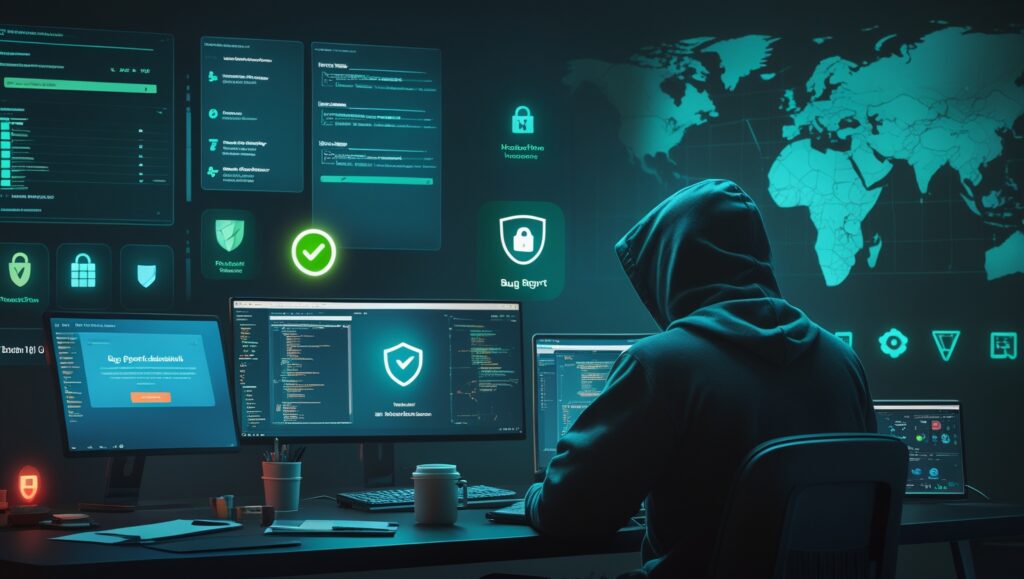
In a world where data is the new currency, cybersecurity is no longer optional—it’s essential. Whether you’re a student, a career changer, or simply fascinated by hacking and defense, starting a career in cybersecurity in 2025 is one of the smartest moves you can make. The industry is booming, talent demand is skyrocketing, and threats are evolving every day.
This guide will walk you through how to start your cybersecurity journey from zero, build a strong foundation, and create a path toward advanced skills and real-world expertise.
1. Understand What Cybersecurity Really Is
Cybersecurity isn’t just about “hacking into systems” or wearing a hoodie in front of a terminal. It’s a broad field with multiple specializations, including:
- Network Security: Protecting networks and devices from unauthorized access.
- Application Security: Securing apps, code, and software vulnerabilities.
- Cloud Security: Safeguarding data and services in platforms like AWS, Azure, or Google Cloud.
- Incident Response: Detecting, analyzing, and mitigating attacks.
- Red Teaming / Ethical Hacking: Simulating attacks to test defenses.
- Blue Teaming: Defending against real-time cyber threats.
- Governance, Risk, and Compliance (GRC): Creating policies and ensuring organizations meet regulations.
Before diving deep, get a broad overview. Read about the CIA triad (Confidentiality, Integrity, Availability)—the foundation of every security framework.
2. Build the Core IT Fundamentals
You can’t protect what you don’t understand. Before focusing on cybersecurity tools, strengthen your general IT knowledge:
Learn the Basics:
- Networking: Understand TCP/IP, DNS, firewalls, VPNs, subnets.
- Operating Systems: Master Windows and Linux (security professionals heavily rely on Linux).
- Command Line Skills: Bash, PowerShell, and scripting basics.
- Hardware & Virtualization: Know how servers, routers, and VMs work.
How to Learn:
- Free resources like Cisco’s Networking Basics, CompTIA Network+ guides, and platforms like FreeCodeCamp.
- Set up your own home lab with VirtualBox or VMware. Practice installing Linux distributions (Ubuntu, Kali).
3. Learn Cybersecurity Fundamentals
Once your IT base is strong, move into core cybersecurity concepts:
- How attacks work: phishing, SQL injection, ransomware, MITM (Man-in-the-Middle), privilege escalation.
- Security Tools: Wireshark, Nmap, Burp Suite, Metasploit, Splunk.
- Authentication & Encryption: Hashing, SSL/TLS, symmetric vs asymmetric cryptography.
- Basic Policies: ISO 27001, NIST frameworks, and GDPR basics.
Start with beginner-friendly certifications:
- CompTIA Security+ – Covers all fundamental areas.
- Certified Ethical Hacker (CEH) (later, once basics are clear).
4. Get Hands-On Practice (Labs & Simulations)
Cybersecurity is a practical skill—you can’t just read about it. Build your own lab:
- TryHackMe: Beginner-friendly platform with guided exercises.
- Hack The Box: More advanced, real-world-like penetration testing.
- OverTheWire: Teaches Linux commands and hacking basics.
- Wireshark Labs: Practice network traffic analysis.
Build small projects:
- Configure your own firewall.
- Detect port scans using tools like Snort.
- Create phishing simulations to understand social engineering.
5. Stay Updated with the Threat Landscape
Cybersecurity changes daily. New vulnerabilities, exploits, and regulations emerge constantly.
How to keep up:
- Follow sites like The Hacker News, KrebsOnSecurity, and Dark Reading.
- Subscribe to vulnerability databases like CVE and NVD.
- Join cybersecurity Twitter/X communities and LinkedIn groups.
- Listen to podcasts like CyberWire Daily or Smashing Security.
6. Learn the Ethics & Legal Side
Hacking without permission is illegal. As an aspiring professional:
- Follow responsible disclosure policies.
- Learn about cybercrime laws (in your country and internationally).
- Understand privacy regulations (GDPR, HIPAA, PCI DSS).
This builds trust and keeps your work professional.
7. Certifications & Education Roadmap
While not mandatory at the start, certifications show employers your dedication.
Suggested Path:
- CompTIA Security+ (beginner)
- Cisco CCNA Security or cloud-specific (AWS Security)
- CEH (Certified Ethical Hacker) or eJPT
- Later: OSCP (Offensive Security Certified Professional) or CISSP
If you’re considering formal education:
- Bachelor’s in Computer Science or Information Security (optional).
- Short online diplomas or bootcamps (fast and practical).
8. Build a Cybersecurity Portfolio
Cybersecurity is as much about people as it is about systems.
- Join forums like Reddit r/cybersecurity, Stack Exchange, and local meetups.
- Attend online webinars or conferences (Black Hat, DEF CON).
- Contribute to open-source security tools.
Networking can lead to internships, mentorships, and job opportunities.
10. Start Small, Scale Big
Your first cybersecurity role might not be “penetration tester.” Start with:
- IT Support or Helpdesk roles to gain real-world experience.
- SOC Analyst (Tier 1) – Monitor threats and alerts.
- Junior Security Analyst – Assist with vulnerability scans and compliance tasks.
Once you gain experience, specialize:
- Red Teaming (Offense)
- Blue Teaming (Defense)
- Forensics
- Cloud Security
- Cybersecurity Compliance
Final Thoughts
Starting a fresh cybersecurity journey may feel overwhelming, but remember:
Every expert hacker once typed their first Linux command.
Break your learning into small steps:
- Learn IT basics → 2. Explore cybersecurity → 3. Practice hands-on → 4. Build a portfolio → 5. Earn certifications → 6. Land your first role.
The demand is massive, salaries are competitive, and the work is meaningful. You’re not just building a career—you’re defending the digital future.


